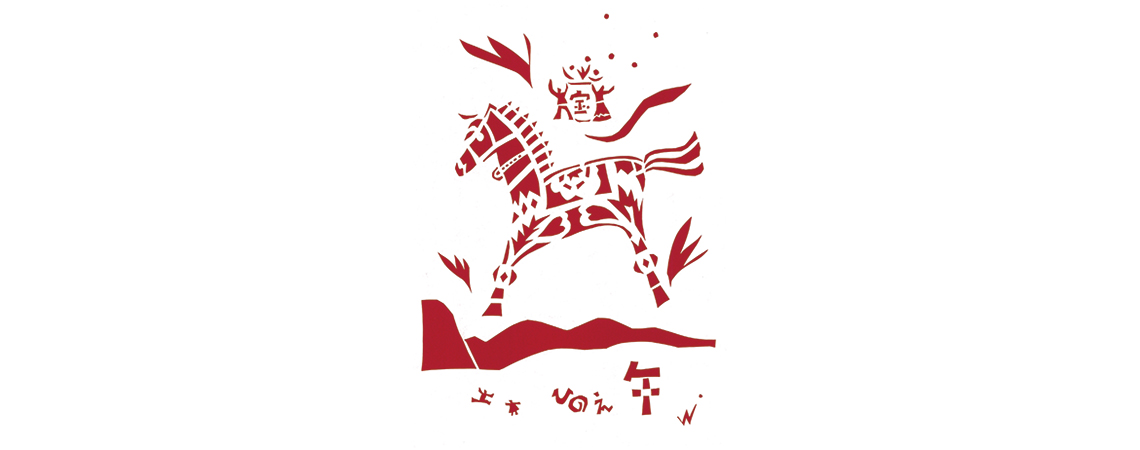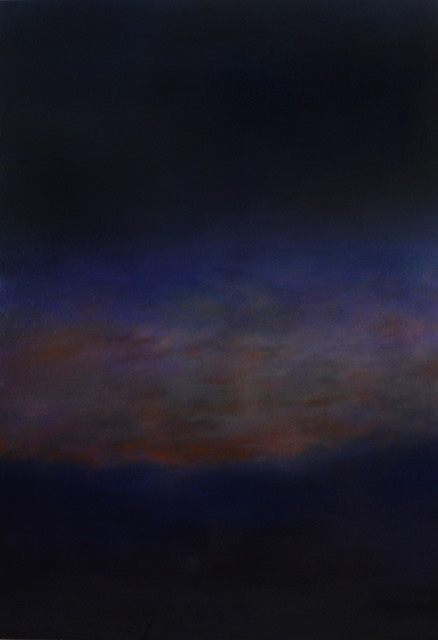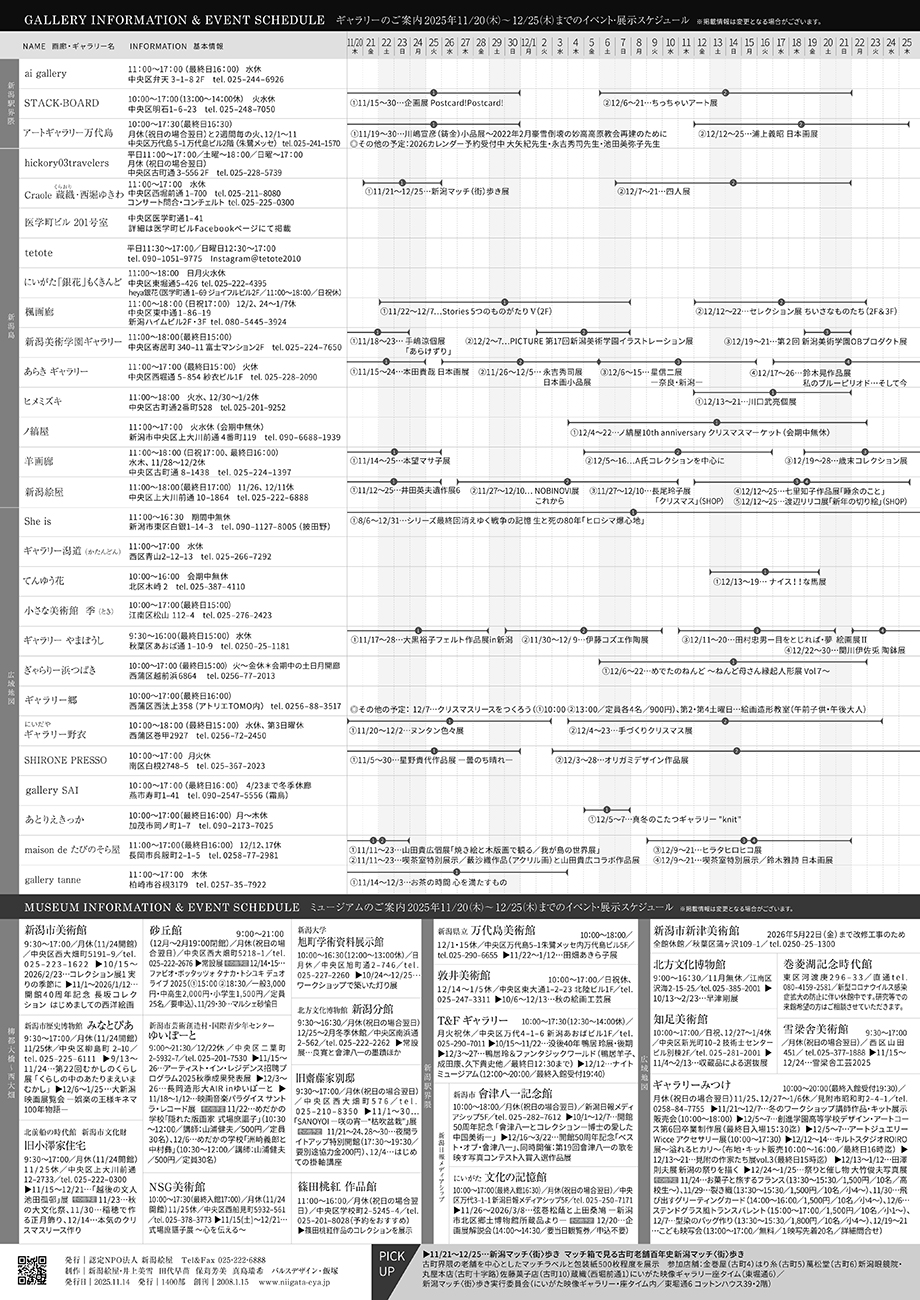11/12[水]―25[火]
EVENT 11/23[日]小口和紅茶をたのしむ日
niigata eya exhibition 703
さがしている絵があった。過去の展覧会で発表し、記憶に残っていたものの所在がわからず『井田英夫画集』に載せられなかった絵だ。井田さんの没後は、展覧会のたびに作品の調査や整理に繋がっており、今回はそのような絵のいくつかと再会することができた。わたしが支援展準備のために音戸を訪ねた折、制作のため手元においておきたいと言っていたぞうきんのスケッチ(画集に収録)の未完の油絵も見つけた。画集のつづきを展覧会で見届けてほしい。(文:井上美雪 企画者:井上美雪、大倉宏)
There was a painting I was searching for. It was one Hideo Ida had exhibited in the past, one that remained in my memory, but whose whereabouts I couldn’t trace, so it couldn’t be included in the Hideo Ida Art Collection. After Mr. Ida’s passing, I’ve been involved in researching and organizing his works for each exhibition, and this time I was able to reunite with several such paintings. During my visit to Ondo for the support exhibition preparations, I also found an unfinished oil painting of a rag sketch (included in the collection) that he had mentioned wanting to keep close at hand for his further work. I hope you will see the extension of the collection at the exhibition. (Text: Miyuki Inoue; Exhibition Planners: Miyuki Inoue, Hiroshi Okura)
井田英夫(いだ ひでお)
1975年旧新津市生まれ。97年新潟デザイン専門学校卒業。99年モンセラート美術大学卒業(米国)。2002年より新潟絵屋、05年ギャラリーEMU-st(新潟)、11年久留米市一番街多目的ギャラリー、12年三方舎書斎ギャラリー(新潟)、15年天仁庵(広島)で個展開催。 15年8月~20年4月広島県呉市音戸町に滞在。17年は新潟絵屋とギャラリーみつけ(新潟)で新作展、砂丘館で回顧展を開催。18年4月、新潟市の2会場で有志の企画による「井田英夫支援展」が開催される。19年新潟絵屋で個展開催。20年4月27日逝去。23年4月『井田英夫画集』発行(井田英夫画集刊行委員会)。
Hideo Ida
Bornin 1975 in the former Niitsu City. Graduated fromNiigata College of Art & Design in 1997, and from Montserrat College of Art (USA) in 1999. Ida has had solo exhibitions at Niigata Eya since2002, Gallery EMU-st (Niigata) in 2005, Kurume Ichibangai Multipurpose Gallery(Kurume) in 2011, Sanpousha Shosai Gallery (Niigata) in 2012, and Tenjinan (Hiroshima) in 2015. From August 2015 to April 2020, he lived in Ondo-cho,Kure City, Hiroshima Prefecture. In 2017, his new works were exhibited at Niigata Eya and Gallery Mitsuke (Niigata), and a retrospective at Sakyukan. In April 2018, the “Hideo Ida Support Exhibition” was organized by volunteers at two venues in Niigata City. In 2019, the artist held a solo exhibition at Niigata Eya. Ida passed away on April 27, 2020. Hideo Ida Art Collection was published in April, 2023 (The Hideo Ida Art Collection Publication Committee).
PHOTO(上): 「南天の木」 2008年 油彩、オイルバー/板 65.2×45.5cm

PHOTO:「冷蔵庫」2017年 木炭、コンテ/紙 42.5×35.2cm

PHOTO:「おばあちゃんと話す春」2017年 パステル・木炭/紙 31.5×24.8cm

PHOTO:「おばあちゃんのアイロン」2015年 木炭、コンテ/紙 21.6×27.2cm

EVENT
小口和紅茶を味わう日
11/23[日祝]11:00-16:00
井田英夫さんの地元、新潟市秋葉区小口は茶葉の産地です。渋みが少なく独特な味わいの和紅茶を試飲いただけます。茶葉の販売も行います。
〈Onedaycafe Pooh出店〉

EVENT
ぶらっと しばためぐり
10/17[金]―26[日]11:00〜17:00
会場:長徳寺(新発田市大栄町2-7-22)・行在所(通常非公開/国登録有形文化財)
新発田市にある由緒あるお寺の貴重な建物に展示する機会をいただき、井田英夫さんの「布団」「第一音戸大橋を背にした自画像」「おばあちゃんのアイロン」「冷蔵庫」など7点を展示しています。


関連記事
2024年:▶ 井田英夫 遺作展 5
2023年:▶ 井田英夫 遺作展 4
2022年:▶ 井田英夫 遺作展 3
2021年:▶ 井田英夫 遺作展 2
2020年:▶ 井田英夫 遺作展——音戸の素描を中心に、井田英夫遺作展@砂丘館
2019年:▶ 井田英夫展
2018年:▶ 井田英夫 巡回支援展
2017年:▶ 井田英夫展、砂丘館 ギャラリートークの動画
2016年:▶ 井田英夫展
2014年:▶ 井田英夫展
2012年:▶ 井田英夫展
2010年:▶ 井田英夫展
2009年:▶ 井田英夫展
2007年:▶ 井田英夫展
2006年:▶ 井田英夫展
2004年:▶ 井田英夫展
2002年:▶ 井田英夫展
























